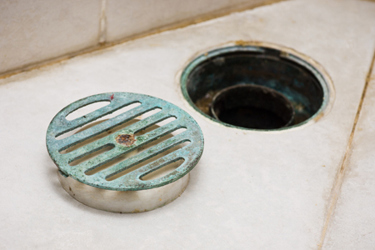Let's Clean Up That Bioburden — The Aseptic Suite's Persistent Plague

Environmental monitoring (EM) is an essential part of how we measure, analyze, and control our classified spaces. These readings are our eyes and ears for the bioburden backgrounds impacting our drug dispensing, manufacturing, and filling operations.
Our task in monitoring is to use the ISO and EU guidelines for each room’s classification and compare our facility’s background against these guides. From the comparison, we must develop a profile of risk to our products. While we cannot expect perpetual sterility in a manufacturing room environment (e.g., EU Grade D, C), we develop a baseline and understand when we have an excursion. It is these excursions, or repeated high counts, or a ramping up over time that we are often faced with and perplexed by the how and why. The “hits” or excursions put our products in question and perpetuate a frustrating cycle of deviation, investigation, resolution, and repeat!
In our combined experience of nearly 70 years, we have dug into many an EM excursion and have seen a wide variety of biotech, pharmaceutical, and related operations. The following case studies discuss several root causes that probably cover nearly 90% of the root cause problem areas.
After countless rescues, remediations, consent decrees, warning letters, and 483s, we have seen it all. Below is a discussion of the specific problematic items for our readers to use as a checklist to avoid EM hits.
Facility
Open floor drains
Open floor drains are a universal problem that has been facing our industry for decades. All these drains ultimately empty into a sewer system, mostly a process sewer system that, unfortunately, contains and retains the same micro flora and fauna that are found in other sewer systems. The open drains provide a substantial uncontrolled wet surface in a moist environment that accommodates the proliferation of many organisms that sporulate (primarily mold and fungus) into the facility’s suite.
It is critical that all unused drains be capped and sealed. If there are working drains in wash areas and process rooms, they must have the drain caps with built-in O-ring gaskets to seal the drains when not being used or they must be covered at shift end. Prior to covering the drain, a liquid disinfectant should be poured down the drain to limit the microbial growth while idle.
Standing water
Speaking of water and drains, standing water on the floors leads to the geometric proliferation of microorganisms due to the water and any soil bound organism carried into the room by it. To solve this problem, the operators need to be aware when there is standing water puddling on the floor and remove it immediately via a drain or by absorption.
Wash pits
Wash pits or washrooms used for “clean out of place” (COP) are the singular most common culprit in creating a wet environment and wet equipment. The cleaning of equipment in these environments usually involves hosing, spraying, scrubbing, and wiping, all creating a room filled with mist that clings to the walls and ceiling. This is an ideal area for microorganisms that travel across the facility, unless the rooms are pressure “sinks” to the adjacent spaces (preferably with high-volume exhaust fans) and are airlocked from other process areas or corridors.
Many of these rooms have their doors left open because of the hot and humid environment. This is a simple case of poor HVAC design. These rooms are the remnants of the manufacturing methods of the 1980s, and we need to look beyond this as we modify and upgrade our facilities. If feasible, equipment needs to be “cleaned in place” (CIP) via a closed automated system; otherwise, use single-use systems (SUS) that are simply disposed of, not washed.
The other problem with wash pits or COP suites is the operators themselves and their practices. Most gowned operators execute the cleaning in their Grade C or D gowns and typically get their gowns wet from the knees downward and soak their booties. Then, the operators track wet bootie footprints throughout the facility (occasionally with the wet equipment).
The objective in these circumstances is to keep all the operators dry as they leave the wash area. Achieving this is rather simple:
- Operators need aprons when washing equipment, preferably disposable ones.
- Operators need knee-high boots that stay inside the washroom or are disposable.
- Operators should thoroughly dry the equipment before leaving the area, which may include an inspection step in the process.
Scale pits
Embedded scales or “scale pits” in the floor combine the risks associated with drains and concealed areas. These are some of the most serious breeding grounds for bioburden, as most have a permanently open drain, a large covered area with slots on the side where dirt, product residuals, and debris collect, and they are mostly never lifted and cleaned.
The recommended way to remediate this risk is to remove the scale pit, seal the drain, install a floor above it, and implement a low-profile flush-mounted scale with the “flip-up” feature for cleaning.
Media preparation areas
In biopharmaceutical facilities, media preparation areas are notorious for bioburden. Open charging of media results in a fine dispersion of growth-promoting dust across the room. Media should be charged via closed transfer, with attention paid to cleaning up any residual powder spill after the transfer container is disconnected. Many media operations are designed with the thought that media is only held for a short time before filtration so equipment design and operations can allow some level of bioburden.
We have seen the significant impact of converting from “drum dumping” to single-use containers with tri-clamp fittings and a follow-up HEPA vacuuming post disconnection. Facilities adopting a zero bioburden mindset for this non-sterile application have found significant improvements in operational efficiency.
Pump leaks
Pump leaks are common in the API business and in large scale support solutions in biotechnology. The key here is the pumps for aqueous solution, buffers, media, and CIP solutions will leak at any time when under continuous use.
Given that they will leak, a cognitive effort is needed to identify, contain, and stop the leaks. All too often, the pump seals will give way to a steady leak stream, and the operators simply open the nearest drain and let it flow until somebody says something. This can be an EM disaster if this is a media or another fluid that can promote growth.
General Operations And SOPs
Cleanliness is a generalized topic, but it revolves around situational awareness and knowing what “good” really looks like. Most importantly, it’s about being proactive.
Several years ago, while doing a plant inspection and remediation program, we were asked by the QA team an interesting question about their SOPs. They asked if the lack of compliance was because the SOPs were too simple and left too much to the imagination, or were they too complex for anybody to understand and execute?
Our answer stunned them all. I told them, regardless of what is in the SOPs, it was not followed or regarded. SOPs in any plant cannot teach common sense, motivate situational awareness, and provide good judgement.
SOPs are generally read by the dozen upon the orientation of a new employee or the transfer of an existing employee to a new area. The training of an operator is typically done by one of the more senior operators or by the floor-level operational supervisors. They train the new operator the same way they were trained, and the training evolves over the generations as students become the trainers.
Here lies the problem: Where the mechanics of an operation evolve and become robotic and key elements of the facility and equipment become “optimized” or “shortcut” (the reader can choose the word), the procedure is compromised and GMPs are not followed. The following are some examples of what we observe and how it impacts EM.
Beware of rouge creep on biopharmaceutical equipment
Rouge/rust in transfer panels, in tanks, on equipment, and on facility fittings cannot be overlooked. Some operators, when challenged with rouging on equipment or on the architectural fittings, will respond that “it always looked like that.”
Not observing the slow advance of rouge is too easy of a trap for an individual operator to fall into, so rotating inspections can help identify these issues. These observations need to be recognized, and a work order must be executed immediately. If the rust or rouge is inside a product transfer system, the operator needs to halt the process until it is de-rouged, passivated, and turned back to operations.
Cover up those exposed fitting threads
Exposed threaded fittings on equipment and utility lines is another common occurrence where imbedded dirt, rust, microorganisms, and Teflon tape often make a bioburden ground-zero inside the classified space. This also needs a work order to clean and either remove or encapsulate the exposed threads.
Manage the flow of bioburden throughout the plant
Material movement equipment is often taken for granted. Items such as pallets, pallet jacks, carts, and hoists need to be inspected for cleanliness before moving around any classified space. Most pallets (especially the polymer ones) have a honeycomb of nooks and holes that have traveled all over the plant and provide a wide spectrum of bioburden moving throughout the plant, both inside and outside of the classified spaces. Most pallets and carts are not reliably cleaned when transitioning between grades.
To prevent bioburden transfer, create a procedure that dedicates the pallets to designated areas (no plant circulation) and where the material is transferred from a dedicated CNC pallet to a dedicated Grade D pallet in the material airlock (MAL). The same goes for other grade changes. This, combined with cleanable stainless-steel pallets that are sanitized with the facility on a rotational basis, is a best practice.
Instill pride of ownership among the team
Operators need to be taught to “own” their suites and look at all the aspects of the facility – floors, walls, ceilings, ceiling hooks, chains, tools, and any support gear – for cleanliness, rust, rouge, and anything that is not shiny!
Quit reusing flange gaskets!
Another area where we see recidivism is the connection/disconnection of tri-clamp flanges. When making connections, the flange ends need to be wiped with a lint-free wipe until clean and closed with a clean gasket. We find operators reusing gaskets, “air drying” them with CIP solution or product present prior to reuse and, on occasion, saving them all over the facility for reuse. The reuse behavior leads not only to bioburden in the product stream but product cross-contamination. Packets of clean (sterilized) gaskets should be placed in the operating areas in several locations, along with wipes and reminders that bioburden and cross-contamination are in the operators’ hands.
Keep your cleaning crew honest
Several years ago, we found a facility where the bioburden became uncontrollable, and the responsible party was an outsourced sanitization crew that worked the graveyard shift (11 p.m. to 7 a.m.) without the owner company’s supervision. In the morning the logbooks were signed, and everyone thought the sanitization was being done. Only by happenstance was it discovered the cleaning crew was playing cards and gambling during their shift.
Sanitization done correctly across the facility (walls, floors, and ceilings) and equipment is critical and no compromise is acceptable. Sanitization can never go on “auto” and those doing it need to be trained, supervised, and, if needed, recorded on camera.
In a separate incident, an experienced operator was caught on camera washing the floor and, with the same mop system, going directly to clean the ceiling. This is an egregious violation of cleaning practices. The individual transferred bioburden from the most bioburdened surface to the ceiling, where the spores and dirt can sprinkle downward.
In all these cases, situational awareness by the operator could avoid these issues. A periodic rereading of training materials is not likely to address this mistake in workflow. Hands-on practice and feedback are key to building appropriate routines. This must be done for all operators, supervisors, and managers, with a frequent walkthrough by the maintenance engineers and quality assurance. Everybody needs to understand what “good” looks like and what is expected. With a predictable frequency of effort and training and the dedication of the management, the facility and production operations will improve to a level at which the operators become their own quality assurance function. Dedication and commitment constitute a “downflow” mission, and it succeeds only if the plant management believes in it and demonstrates it.
Conclusions
In the end, we must realize that vigilance in best practices and constant training are good business. By eliminating bioburden and reducing EM hits, we are making our operators’ lives much easier and more efficient. If we think about EM excursions, we have a series of distractions that require time and frustration from all operational personnel:
- deviations
- investigations
- tedious reporting
- interviews
- root-cause analyses
- wasted time by production personnel
- lost production capacity
- product on hold for additional testing
- lost product
All this yields negative performance reviews, which in turn breed more frustration, poor attitudes, and more poor performance. The commitment to meticulous bioburden reduction will break this negative cycle.
As an example, a large East Coast cell culture facility that was destroying 20% of its yearly product went on a year-long campaign to reduce bioburden and was able to increase capacity by a total of 40% from its low point. This improved production and increased morale beyond any other means.
The combination of cleanliness, serious bioburden reduction, and operator immersion in the process is a great business approach.
This is the first part of a three-part series. In the next two installments, we will cover key maintenance areas, quality labs, and design.
About The Authors:
 Herman F. Bozenhardt has 47 years of experience in pharmaceutical, biotechnology manufacturing, engineering, and compliance. He is a recognized expert in aseptic filling facilities and systems and has extensive experience in the manufacture of therapeutic biologicals and vaccines. His current consulting work focuses on aseptic systems, liposomes, biological manufacturing (BL-1, BL-2, BL-3), and automation/computer systems. He has a B.S. in chemical engineering and a M.S. in system engineering, both from the Polytechnic Institute of Brooklyn (now NYU). He can be reached by email at hermanbozenhardt@gmail.com and on LinkedIn.
Herman F. Bozenhardt has 47 years of experience in pharmaceutical, biotechnology manufacturing, engineering, and compliance. He is a recognized expert in aseptic filling facilities and systems and has extensive experience in the manufacture of therapeutic biologicals and vaccines. His current consulting work focuses on aseptic systems, liposomes, biological manufacturing (BL-1, BL-2, BL-3), and automation/computer systems. He has a B.S. in chemical engineering and a M.S. in system engineering, both from the Polytechnic Institute of Brooklyn (now NYU). He can be reached by email at hermanbozenhardt@gmail.com and on LinkedIn.
 Erich H. Bozenhardt is the associate director of process engineering for Untied Therapeutics in Raleigh, NC. He has 18 years of experience in the biotechnology and aseptic processes and has led several biological manufacturing projects, including cell and gene therapies, mammalian cell culture, and novel delivery systems. He has a B.S. in chemical engineering and an MBA, both from the University of Delaware. He can be reached at by email at erichbozenhardt@gmail.com and on LinkedIn.
Erich H. Bozenhardt is the associate director of process engineering for Untied Therapeutics in Raleigh, NC. He has 18 years of experience in the biotechnology and aseptic processes and has led several biological manufacturing projects, including cell and gene therapies, mammalian cell culture, and novel delivery systems. He has a B.S. in chemical engineering and an MBA, both from the University of Delaware. He can be reached at by email at erichbozenhardt@gmail.com and on LinkedIn.
